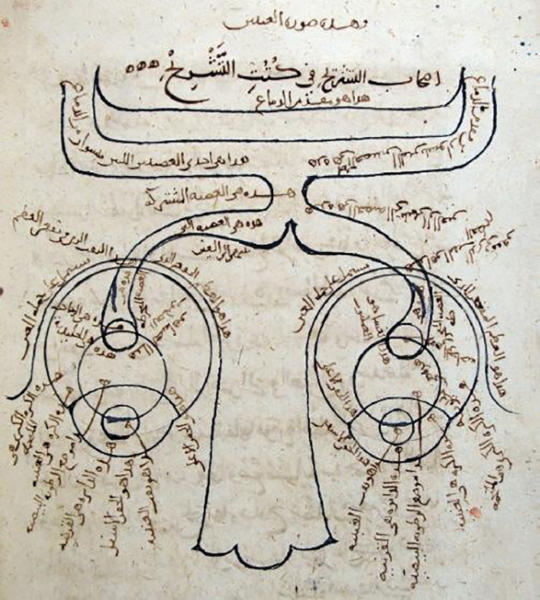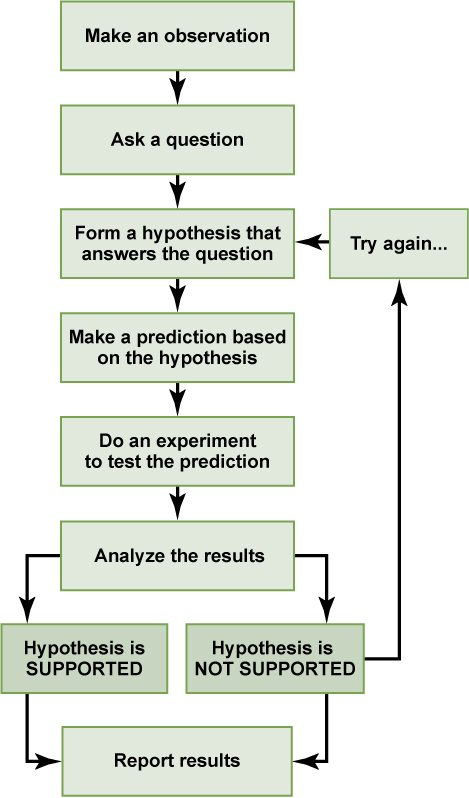2.1 Scientific Inquiry
Science is a method for understanding the natural world. It relies on objective evidence as a means to construct and test ideas about natural phenomena and processes. Scientists make observations about the natural world and perform experiments to test ideas about how the universe works.
The Scientific Method
Science relies on the scientific method, which is a process of observing the natural world, posing questions about it, proposing possible explanations, and using objective reasoning to draw conclusions. The idea of empirical experimentation is ancient, and many notable scientists and philosophers have contributed to its development. One of the earliest to propose a systematic way of testing hypotheses was al-Hassan Ibn al-Haytham, an Arab scientist and mathematician who lived over 1,000 years ago.

Hypothesis Testing
Scientists often begin an inquiry by making observations about the natural world and formulating a question. They then propose one or more possible hypotheses (singular: hypothesis), or possible explanations for their observations. A hypothesis must be plausible, meaning that it must fit with what we already know about the natural world. A valid hypothesis must be testable. A hypothesis should also be falsifiable, meaning that if the idea is incorrect, one must be able to test it and prove it to be false.
Importantly, science does not claim to “prove” anything because scientific understandings are always subject to modification with further information. This step—openness to disproving ideas—is what distinguishes sciences from non-sciences. The presence of the supernatural, for instance, is neither testable nor falsifiable.
Experimentation
Some hypotheses can be tested by further observations. Other are also tested by experimentation. Experimentation is a rigorous way to test ideas. There are many ways to conduct experiments. One powerful way to test hypotheses is via a controlled experiment. In this type of experiment, there is a control group and one (or more) experimental group(s). The experimental group and the control group should be as similar as possible, but differ by a variable that the scientist is interested in studying. A variable is any part of the experiment that can vary or change during the experiment. The control group contains every feature of the experimental group except it is not given the manipulation that the researcher hypothesizes. Therefore, if the experimental group’s results differ from the control group, the difference is due to the manipulated variable, rather than some outside factor.

Scientific Theories
When someone says, “I have a theory about something,” they usually mean that they have a guess. In science, however, the word theory is used differently than it is used in casual conversation. A theory is a tested and confirmed explanation for observations or phenomena.
The American Association for the Advancement of Science states:
“A scientific theory is a well-substantiated explanation of some aspect of the natural world, based on a body of facts that have been repeatedly confirmed through observation and experiment. Such fact-supported theories are not “guesses” but reliable accounts of the real world. The theory of biological evolution is more than “just a theory”. It is as factual an explanation of the universe as the atomic theory of matter or the germ theory of disease. Our understanding of gravity is still a work in progress. But the phenomenon of gravity, like evolution, is an accepted fact.”
Scientific theories have predictive power, meaning that we can use them to make accurate predictions about the world. A scientific Theory is broad in scope which means it can help people propose new, testable hypotheses.
Reporting Scientific Work
Science is also a social endeavor. Scientists must share their findings in order for other researchers to expand and build upon their discoveries. Collaboration with other scientists—when planning, conducting, and analyzing results—are all important for scientific research. For this reason, important aspects of a scientist’s work are communicating with peers and disseminating results to peers. Scientists can share results by presenting them at a scientific meeting or conference, but this approach can reach only the select few who are present.
Instead, most scientists present their results in peer-reviewed manuscripts that are published in scientific journals. Peer-reviewed manuscripts are scientific papers that a scientist’s colleagues or peers review. These colleagues are qualified individuals, often experts in the same research area, who judge whether or not the scientist’s work is suitable for publication. The process of peer review helps to ensure that the research in a scientific paper or grant proposal is original, significant, logical, and thorough.
method to understand the natural world, that includes observation, formulation of a hypothesis, testing, and confirming or falsifying the hypothesis
a proposed explanation that can be tested
a group in an experiment that does not receive the experimental treatment and is used as a comparison for the group(s) that receive the treatment
a group in an experiment that receives a treatment that the researcher(s) are interested in studying
a feature of an experiment that can vary
well-tested and confirmed explanation for observations or phenomena

